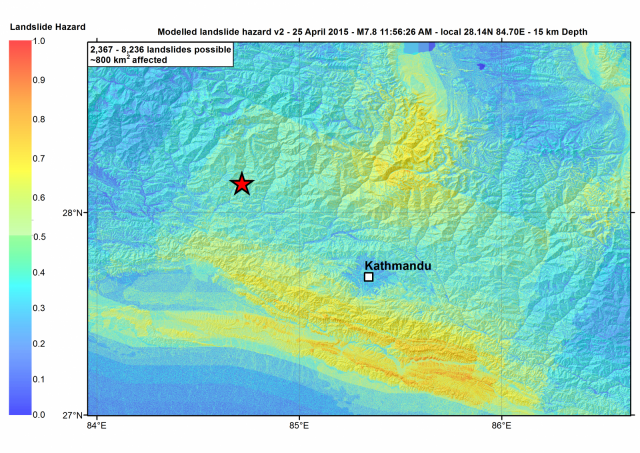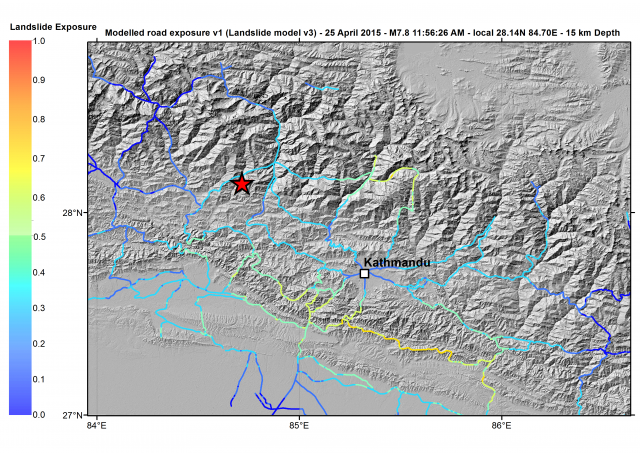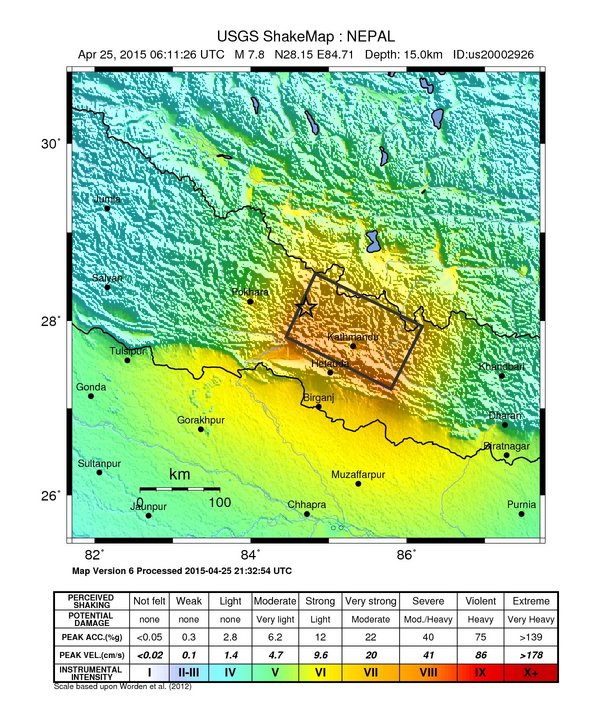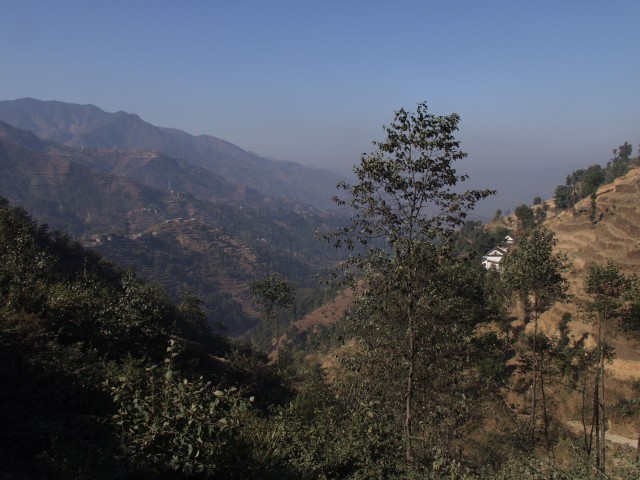26 April 2015
Landslides from the Nepal earthquake yesterday
Posted by Dave Petley
Landslides from the Nepal Earthquake
Whilst the Nepal Earthquake is now the centre of global attention, the true pattern of loss is not yet apparent. As usual, the focus in the first 24 hours is on the locations that have both media presence and easy telecommunications – in this case Kathmandu. The impacts there are undoubtedly serious, especially for historic masonry buildings, and the city will never be the same again. But the true impacts of this event are going to have been felt in the rural areas to the north of the city. At present there is little information from those districts, but expect the picture to be tragic as it emerges over the next two days.
Landslides are going to be a very real problem in those areas affected by the Nepal earthquake, and by its aftershocks. Indeed, just 15 minutes ago there was a very shallow M=6.8 aftershock that is likely to have caused substantial damage in its own right, albeit in a more limited area. There has been some confusion about the area affected by the earthquake, and in particular the area of most intense shaking. This is because there is a perception that the epicentre is the centre of the earthquake, and thus that the damage should radiate away from this point. This is not the case. The earthquake energy is derived from movement on a fault (or sometimes more than one fault) – a complex three-dimensional structure that extends over a large distance. The epicentre is just where the rupture initiates – i.e. the location at which the fault starts to move. The rupture then propagates along the fault, releasing energy as it goes. Often the rupture propagates quite evenly away from the epicentre, in which case the epicentre is close to the centre of the earthquake-affected area. But at other times the rupture propagates preferentially in one direction or another.
In the case of the Nepal Earthquake the rupture appears to have propagated mostly towards the east of the epicentre, not to the west. So the epicentre itself is at the west end of the earthquake affected zone. This is clear from the USGS shakemap, which shows the epicentre as a star:
This was good for Pokhara, but bad for Kathmandu. It also explains why the impacts at Everest were so serious.
Possible landslides from the Nepal earthquake
The most seriously affected area from the earthquake is mountainous and remote, but there are substantial numbers of people living in the valleys and on the hillsides. This is a typical landscape:-
Further to the north the mountains become higher and the slopes longer. Note the terracing in the fields, the steep slopes and the large numbers of houses. There are many substantial villages, often located high on the slopes. This is highly landslide-prone territory, and the impact of the earthquake in these regions is going to be dreadful. Some effort is already being made to analyse the likely landslide effects, although at this stage such efforts are tentative. Over on the EWF blog, Alex Densmore has posted an initially analysis by Tom Robinson from the University of Canterbury of the likely areas affected by landslides:

Landslide susceptibility in the Nepal Earthquake by Tom Robinson, University of Canterbury
.
There are a few things to note here. First, the analysis is dependent on the data quality, and you can see that there are some issues there (this is why there appears to be straight line boundaries in landslide hazard in places) – that is an important caveat. But the analysis is really interesting and helpful. It shows that to the north of Kathmandu, the very remote areas are likely to have been severely affected by landslides – but as yet there is no information from up there of course. And interestingly the hills to the south of Kathmandu are also badly impacted by landslides triggered by the Nepal earthquake – indeed the landslide picture might be as bad there as to the north. This is significant for two reasons – first, there are lots of people living in this area; and second, the roads that link Kathmandu to the outside world have to cross these hills.
Tom has run a quick analysis of the main roads affected by these landslides – the impacts look to be very serious:

Likely major road impacts of landslides, by Tom Robinson, University of Canterbury
.
Kathmandu is entirely dependent on goods being brought into the city on these roads. If they are badly affected by landslides then the impacts will be severe.
There is a real urgency about the need to assess the actual landslide impacts, especially to the north – we need satellite imagery quickly. There must be a strong possibility of large valley-blocking landslides triggered by the Nepal Earthquake in the high mountains to the north- if so these will need to addressed without delay. The monsoon is going to be a real problem this year.




 Dave Petley is the Vice-Chancellor of the University of Hull in the United Kingdom. His blog provides commentary and analysis of landslide events occurring worldwide, including the landslides themselves, latest research, and conferences and meetings.
Dave Petley is the Vice-Chancellor of the University of Hull in the United Kingdom. His blog provides commentary and analysis of landslide events occurring worldwide, including the landslides themselves, latest research, and conferences and meetings.
and the monsoons will impact the newly disrupted mountain sides i suppose. Looks bad for a long time.
Sadly motsfo
Laprak, a village of about 2000 people located 12 km north of the epicenter, is on a landslide that has been moving episodically during wet periods since it was reactivated in 1999 ( http://eeg.geoscienceworld.org/content/17/1/23.abstract ). Early reports and aerial photos suggest almost complete destruction, but it is unclear if it was a result of shaking, sliding, or some combination of the two.